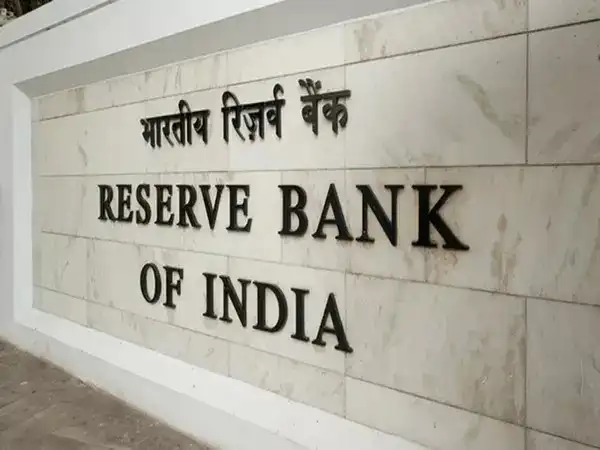RBI Raises IPO Financing: The Reserve Bank of India (RBI) has recently announced significant relaxations in norms governing IPO financing and loan against securities (LAS). These changes are expected to offer greater flexibility to retail and high-net-worth investors (HNIs) seeking to leverage opportunities in the primary market. Market experts, including Nilanjan Dey, emphasize that with these relaxed norms, investors should approach borrowing wisely, balancing opportunity with risk.
The last fortnight has been eventful for the stock market. Beyond daily index movements, the central bank’s announcement has created a buzz among market participants. The IPO financing limit has been raised from ₹10 lakh to ₹25 lakh per individual, while the LAS ceiling has surged fivefold, from ₹20 lakh to ₹1 crore. These norms are also applicable to units of Real Estate Investment Trusts (REITs) and Infrastructure Investment Trusts (InvITs), making them more accessible to wealthy investors seeking diversified investment options.
According to RBI authorities, this is the right time for revisions. IPO financing and LAS norms had remained unchanged for years, while market dynamics have evolved. The surge in large public issues over the past three years — including Hyundai Motors, Jio Financial Services, and Paytm (One97 Communications) — illustrates growing investor interest and market capacity. Additionally, a review of recent draft offer documents submitted to SEBI shows a wide range of new issues expected in the coming quarters, signaling sustained market activity.
Details of the RBI New Guidelines
Increased IPO Financing Limit
- Previous limit: ₹10 lakh per individual
- Revised limit: ₹25 lakh per individual
- Objective: Encourage retail participation in IPOs and support capital formation
Enhanced Loan Against Securities (LAS) Ceiling
- Previous LAS limit: ₹20 lakh
- Revised LAS limit: ₹1 crore
- Applicable to: REITs, InvITs, equities, and select securities
- Benefit: Provides greater liquidity options for investors holding quality assets
Impact on Market Participants
- Higher loan limits are particularly beneficial for retail investors and HNIs.
- Investors can now leverage secured loans to participate in large IPOs without fully liquidating existing holdings.
- Market analysts believe this move will steer more credit toward capital formation, boosting primary market activity.
Read about: Why Indian Banks Are Well-Positioned to Absorb Loan Losses
Recent IPOs Reflecting Increased Retail Participation
The primary market has witnessed a series of notable IPOs in recent months, including:
- LG Electronics
- Tata Capital
- Canara HSBC Life Insurance
- Canara Robeco AMC
- WeWork India
These IPOs have seen strong participation from both retail investors and HNIs, reflecting enthusiasm for well-structured public issues. With increased financing limits, the scope for leveraging opportunities has expanded, making it easier for investors to allocate more capital to promising IPOs.

Investor Guidelines: What to Consider Before Borrowing
While higher limits are appealing, experts caution investors to exercise prudence. Borrowing without a clear strategy can lead to financial strain. Here are some key considerations:
1. Assess Loan-to-Value (LTV) Ratios
- A safe LTV ratio is typically below 50%.
- High LTVs can create challenges during market corrections or if partial liquidation is necessary.
2. Understand Market Risks
- Asset prices, including unlisted shares, can swing significantly.
- Distress sales in volatile markets may not yield expected returns, increasing financial risk.
3. Review Loan Terms Carefully
- Examine interest rates, repayment schedules, and collateral clauses.
- Ensure lenders cannot unilaterally alter critical terms, which could disrupt financial planning.
- Collateral mandates are particularly important to prevent sudden recall of loans.
4. Avoid Borrowing Without Purpose
- Borrowing for the sake of leverage can be dangerous.
- Structured strategies should guide every financing decision.
Conclusion
The RBI’s recent move to raise IPO financing and LAS limits marks a significant step toward enhancing liquidity and investor participation in the primary market. For retail investors and HNIs, this provides an opportunity to strategically expand their portfolios while leveraging capital efficiently.
However, with higher leverage comes increased responsibility. Investors must analyze risks, review loan agreements, and monitor market trends to make informed decisions. Excessive borrowing without planning can lead to financial instability, especially in volatile market conditions.
Market experts believe that these regulatory changes will strengthen capital formation and encourage more active participation in IPOs and REIT/InvIT units. Yet, caution and strategic planning remain essential for successful investment outcomes.
Ultimately, this is a time of opportunity for disciplined investors who are prepared to use financing wisely, balancing growth prospects with prudent risk management. By carefully evaluating LTV, market conditions, and loan terms, investors can maximize benefits while minimizing potential pitfalls.
Also read: Three-Year-Old Dies Shortly After Receiving Polio Vaccine in Sangareddy
FAQs of RBI Raises IPO Financing
1. What are the new IPO financing limits set by RBI?
The RBI has increased the IPO financing limit from ₹10 lakh to ₹25 lakh per individual, enabling retail investors to borrow more funds to participate in public issues. This applies to conventional IPOs and units of REITs and InvITs.
2. How has the Loan Against Securities (LAS) ceiling changed?
The LAS limit has been raised from ₹20 lakh to ₹1 crore, allowing investors to access higher liquidity against pledged securities. This is particularly useful for HNIs seeking to diversify their investments without liquidating assets.
3. What risks should investors consider before borrowing for IPOs?
Investors should consider market volatility, LTV ratios, liquidity of pledged assets, and interest rate terms. Borrowing excessively without a clear plan can lead to financial strain, especially during market corrections.
4. Which securities are eligible for Loan Against Securities under the new norms?
The enhanced LAS ceiling applies to listed equities, units of REITs and InvITs, and other eligible securities recognized by banks or financial institutions. Unlisted shares may pose liquidity risks and require careful evaluation.
5. How can investors use these relaxed norms effectively?
Investors should adopt a strategic approach, analyzing IPO prospects, market trends, and LTV ratios. Careful planning, regular monitoring, and understanding loan terms are crucial to maximize returns while minimizing financial risk.

One thought on “RBI Raises IPO Financing and Loan Against Securities Limits: What Investors Must Know”